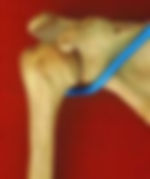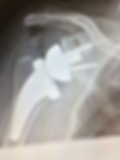SHOULDER REPLACEMENTS
- Alain Iserin
- Jul 11, 2024
- 3 min read
Updated: Jul 13, 2024
A shoulder replacement can be considered in several circumstances, mainly in the case of:
Severe arthritis
Non repairable tendon tear
Recent or old trauma
This procedure is mainly of interest in elderly patients and their results have improved remarkedly over the last 10 years, due to the progress of reverse shoulder replacement.
ANATOMY
The main shoulder joint or glenohumeral joint is made up of several types of structures, including bone and soft tissue.
Bone structures are made up of two main bones 'that fit together':
The humerus, whose upper articular part has a rounded shape and constitutes a third of a sphere.
The scapula, a mild concave triangular bone, sliding over the thorax, whose articular part or glenoid, articulates with the head of the humerus.
The articular part of these bones is covered with a layer of tissue called cartilage that facilitates the sliding of the joint surfaces, making it painless and frictionless.
Cartilage wear or osteoarthritis leads to a direct friction 'bone on bone' which is extremely painful.

In addition, the head of the humerus is surrounded by the rotator cuff, which consists of five muscles extending through their tendons.
SYMPTOMS
Symptoms are very often related to osteoarthritis, inflammatory diseases, necrosis of the head of the humerus, and certain old traumas to the shoulder. This wear and tear often cause pain when mobilizing the arm, but sometimes even at rest, which is increasingly important, until it becomes nocturnal. Pain, as well as wear and tear on the joint surfaces, is also responsible for a decrease in shoulder mobility.
Complex fractures of the upper end of the humerus with many fragments, which are very displaced, in the elderly, can benefit from a shoulder prosthesis.

Massive rupture of the rotator cuff tendons may lead to a superior migration of the humerus head which comes to rest under the acromion. In these conditions, the pain is most often associated with a complete lack of strength, no longer allowing the arm to move forward.


These three situations, all very different in terms of pathology, can now be solved thanks to the shoulder replacements.
IMAGING
Obviously, standard X-rays will be performed first, which allows to diagnose the type of pathology: osteoarthritis, necrosis, rheumatic diseases).
When an operation is needed an MRI scan or an Arthro CT is requested to assess the shape of the joint and the condition of the rotator cuff tendons. Very often in arthritis the glenoid shape is abnormal not concave enough or retroverted. It’s a congenital disease.

CONSERVATIVE TREATMENT
In osteoarthritis, rheumatoid diseases or necrosis of the head of the humerus, pain may be addressed with anti-inflammatories and painkillers.
Rehabilitation is offered to restore mobility and strength.
Finally, injections with steroid-type anti-inflammatories may initially relieve some of the pain.
SURGICAL TREATMENT WITH SHOULDER REPLACEMENT
The procedure consists in replacing worn joint surfaces with prosthetic parts.
The goal of shoulder joint prosthetic replacement is to relieve pain, restore much of the mobility and strength.
Most of the time I now use a reverse shoulder replacement in:
osteoarthritis with sometimes a glenoid graft when needed.

necrosis of the humeral head
recent fractures where both tuberosities are fixed.
massive and irreparable ruptures of the rotator cuff tendons

A computer preplanning and augmented reality goggles may be needed in difficult cases to match the patient anatomy.


COMPLICATIONS
The complication rate following a shoulder replacement is low. However, as with any surgical procedure, there are some complications, although a large majority of them can be avoided or successfully treated. We describe:
general complications, such as infection
alteration of a nerve or a vessel
problems related to the prosthesis itself: mainly wear and tear.
THE AFTERMATH OF THE OPERATION
Patients stay in hospital for one night.
The arm is in a sling for 3 weeks.
Physio should be done in the water to recover motion first and then with a physiotherapist to recover strength.


Once mobility has been restored and pain has been alleviated, it is possible to start rehabilitation with the aim of strengthening muscles. The final result of a shoulder prosthesis is judged 3 to 6 months after the operation.
SUMMARY
Shoulder replacement surgery has recently made significant progress especially with new reverse implants.
The results are directly related to the experience and specialization of the surgeon.




